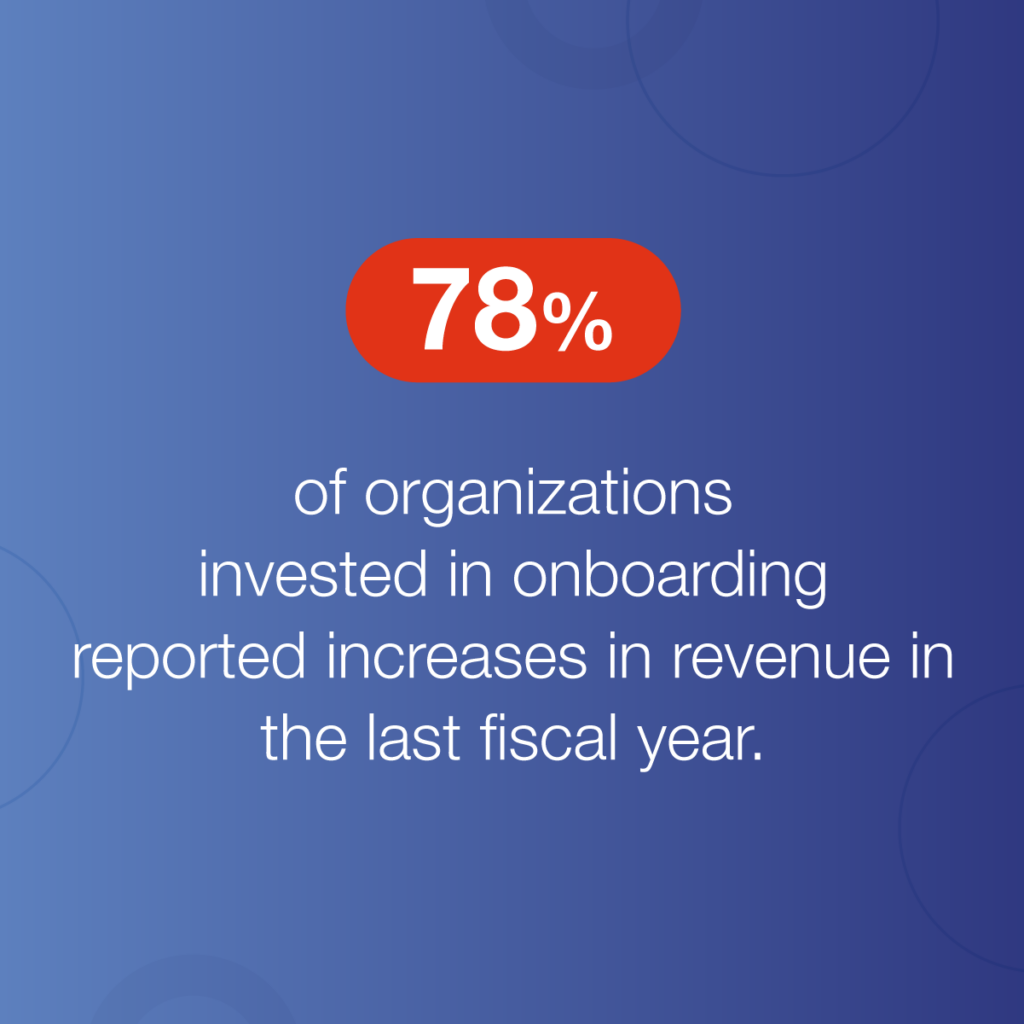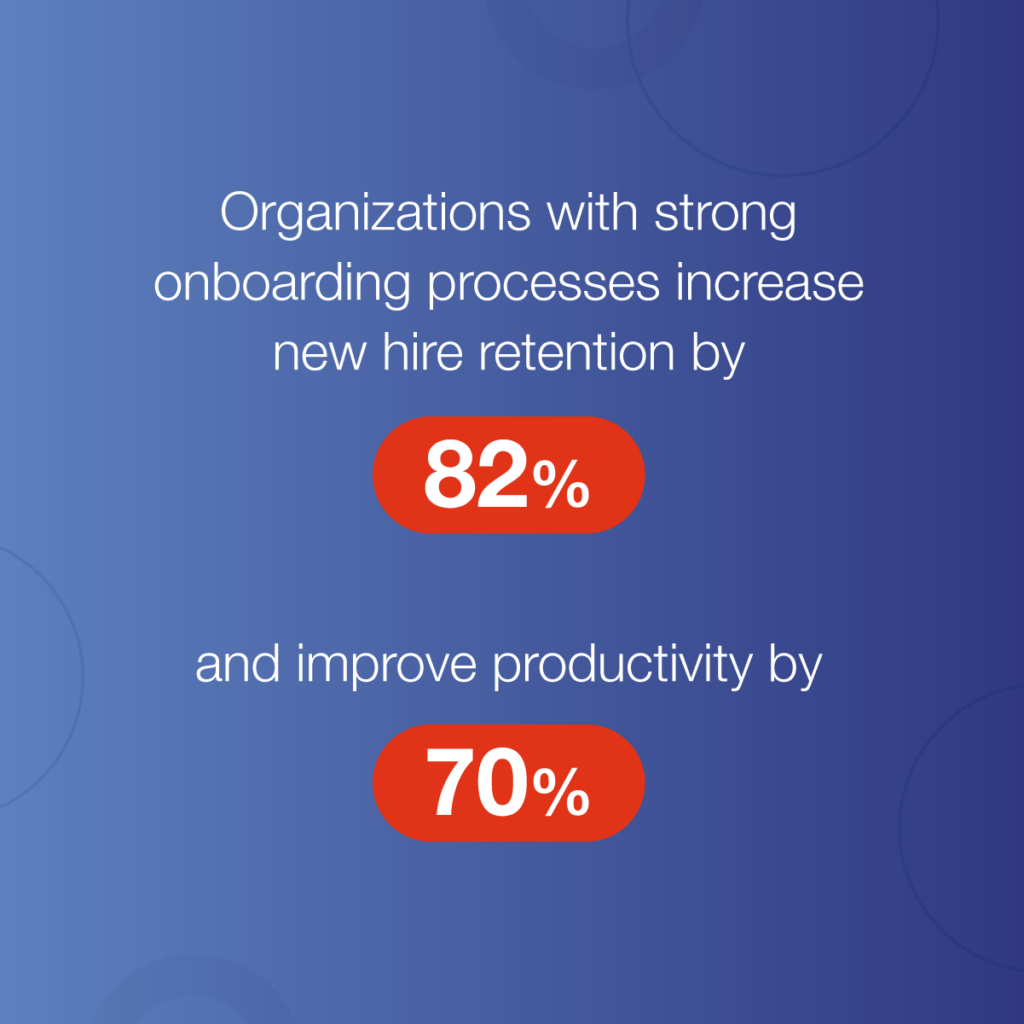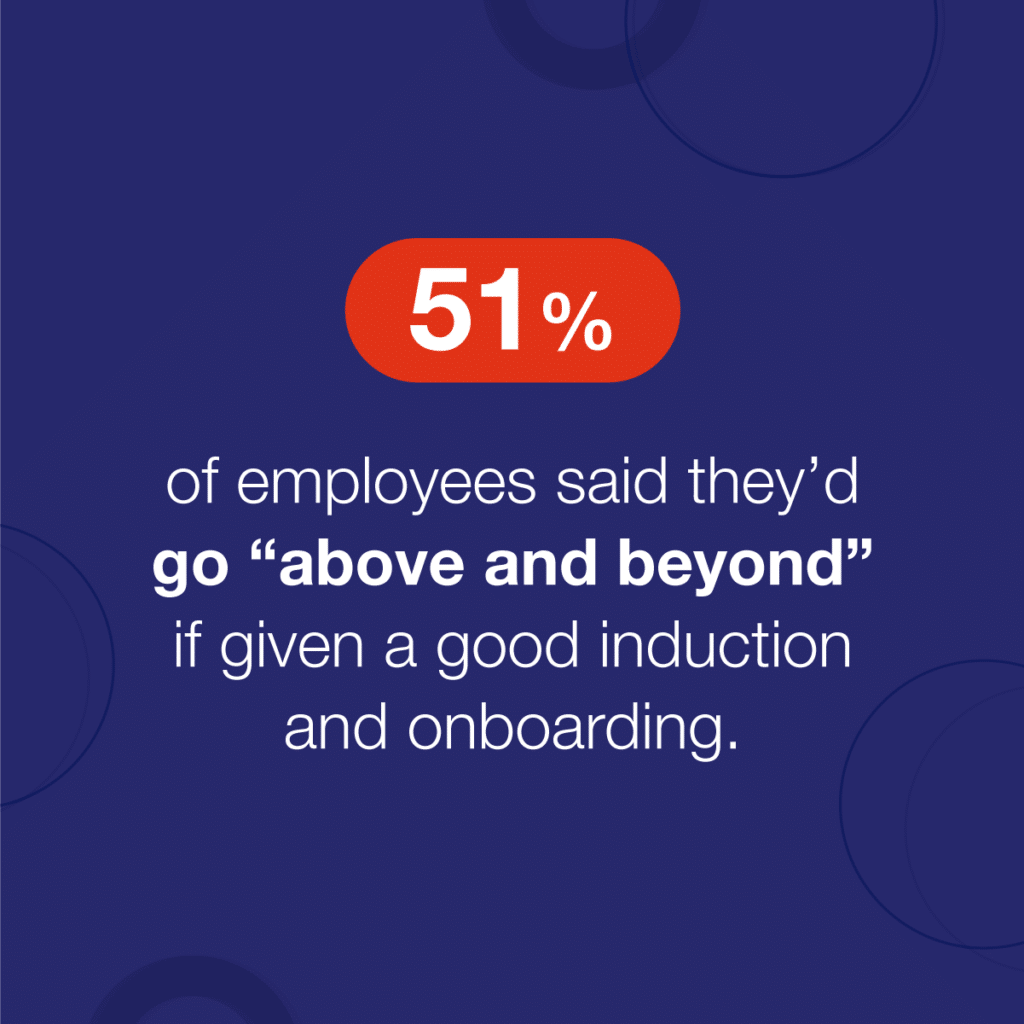Both are needed to successfully integrate new employees and retain top talent!
Orientation and onboarding: Both are familiar terms, yet they are two words often mistakenly used interchangeably. While they may seem similar at first glance, they serve distinct purposes and play crucial roles in retaining organizational talent. And everyone in the organization (not just HR) needs to understand the difference.
Starting a new job is an exciting and pivotal moment for any employee. It signifies a fresh start, new challenges, and opportunities for personal and professional growth. For organizations, welcoming and integrating new hires effectively is equally critical, and it’s at this juncture orientation and onboarding come into play.
Understanding the differences between these two processes is essential for creating a seamless transition for new employees and ensuring they thrive in their new roles. In this blog, we will explore the disparities between orientation and onboarding, examine what each entails, process why they are essential for retaining talent, and uncover the cost of forgoing these distinct training opportunities.
Jump to a Section
- What Is Orientation?
- Best Practices for New Hire Orientation
- What Is Onboarding?
- 8 Elements of a Successful Onboarding Program
- The Real Cost of NOT Training
- Orientation vs. Onboarding Key Takeaways
What Is Orientation?
According to the Society for Human Resource Management (SHRM), orientation is “the process of introducing new hires to the workplace with activities that usually last two to five days” and will include some or all of the following activities:
- Company and department overview.
- Opportunities to complete mandatory paperwork.
- Q&A session for new hires to ask general questions.
- Meet and greet with key internal stakeholders.
Simply stated, orientation could be considered onboarding’s less comprehensive sibling, as it is typically a one-time event for the sole purpose of introducing new hires to their new workplace and acquainting them with company basics. The primary aim of orientation is to help employees feel comfortable, reduce initial anxiety, and establish a sense of belonging within the organization.
Best Practices for New Hire Orientation
In a 2023 Forbes.com article, “New Hire Orientation Checklist & Best Practices,” the following were shared:
- Choose the right day.
- Share the agenda in advance.
- Schedule one-on-one time.
- Automate paperwork.
- Provide an employee Welcome Packet.
- Introduce managers.
- Be mindful of information overload.
- Engage employees.
- Give an office tour.
- Improve as necessary.
Remember, orientation provides a high-level, but important, look at the company. It’s the perfect time to share the company’s history, mission, values, and culture, which should ultimately set the tone for an employee’s journey within the organization.
From workplace tours that allow new hires to familiarize themselves with the physical layout of the workplace to introductions of key personnel (i.e., HR representatives, supervisors, and coworkers) and company policies (i.e., code of conduct, safety protocols, and basic benefits information), new employee orientations help set the tone and expectations of your corporate culture.
What Is Onboarding?
So, what is onboarding? Whereas orientation skims the surface, onboarding takes a deeper dive into the employee experience. The two are distinctly different.
Onboarding is a more comprehensive and ongoing process that extends well beyond the first day or week of employment. SHRM defines it as “the process of integrating new hires into the organization…[going] beyond the brief introduction and [ensuring] that new hires are fully assimilated in their new environment by exploring the organization’s culture, mission, vision, values, and strategies.”
An effective onboarding process is designed to help new employees not only adapt to their roles but also integrate easily into the company culture. When done well, a robust onboarding program will provide employees with the tools, knowledge, and support they need to excel in their positions.
8 Elements of a Successful Onboarding Program
The ebook “Onboarding Done Right: 8 Proven Elements That Empower and Engage” shares eight elements of a successful onboarding program. They include:
- Uses on-demand courses to reduce onboarding time.
- Starts on day one.
- Utilizes your Learning Management System (LMS).
- Introduces your organization.
- Creates clear pathways for employee growth.
- Engages employees.
- Prioritizes compliance training.
- Motivates employees.
Onboarding is your company’s opportunity to engage the hearts and minds of your employees. And a well-designed onboarding program can make a big difference in a new hire’s success.
A comprehensive onboarding process will include relevant training, policies that outline the company processes, and surveys to assess their performance long into the future. By providing employees with the information and resources they need to get up to speed quickly, you can help them feel more confident and productive in their new roles.
When done well, onboarding should provide the backbone of your employee retention plan and incorporate the following:
- Long-term employee development: Help employees cast a vision for their career within your organization, including encouragement and support for achieving those goals.
- Feedback and evaluation: Provide regular check-ins and feedback sessions to assess each employee’s performance and address any concerns or questions.
- Surveys and assessments: Offer periodic surveys and assessments to gauge employees’ satisfaction, engagement, and overall experience. Don’t assume your onboarding program is effective; ASK!
The Real Cost of NOT Training
Too often, companies view the time and expense of creating a robust onboarding process as a “nice to have” rather than an essential component of talent retention and development.
However, neglecting to implement an effective onboarding program can have detrimental effects on an organization’s success. Studies have shown that up to 20% of employee turnover occurs within the first 45 days without proper onboarding. This turnover results in significant financial losses due to recruitment, hiring, and training costs.
And just like orientation is not the same thing as onboarding, training is also different from onboarding. While training is only one part of onboarding, it is a significant component among employers who want, need, and expect the best results from their new hires.
A research study by Zippia to uncover onboarding trends in 2023 found the following:
- On average, onboarding costs a little over $1,500 while the cost of hiring a new employee is $4,129.
- Approximately 35% of companies spend zero dollars on onboarding [yet] a majority of this percentage spend approximately $11,000 on recruitment and turnover costs.
- Bad onboarding experiences account for 44% of employees lost in the first six months of being hired.
It’s clear that the benefits to your organization far outweigh the costs associated with program development and execution. As the Zippia study also shows:
Unfortunately, the study also revealed that “only 12% of employees strongly agree that their organization does a great job of onboarding.” While that’s a difficult statistic to digest, it also presents a prime opportunity for improvement that offers evidentiary support for boosting the bottom line.

-
- Recruitment costs: As noted in the researched statistics above, constantly recruiting and replacing employees can be costly. Each new hire requires advertising, interviewing, and screening expenses. Without proper onboarding, many of these investments go to waste as employees leave prematurely.
- Lost productivity: New employees often take time to reach their full potential. A lack of effective onboarding can prolong this learning curve, leading to reduced productivity and, in turn, decreased revenue for the organization.
- Training costs: Training is a substantial investment for organizations. Without a solid onboarding process, employees may require more extensive training down the line, leading to increased expenses in the long run.
- Employee morale and engagement: Employees who feel unsupported or inadequately prepared are more likely to become disengaged and less motivated. This not only affects their job performance but also can have a negative impact on team dynamics and company culture.
Orientation vs. Onboarding Key Takeaways
In summary, orientation and onboarding serve distinct yet complementary roles in successfully integrating new employees into an organization. Orientation is a one-time event that introduces employees to the company’s basics, while onboarding is an ongoing process that equips them with the tools, knowledge, and support needed for long-term success.
Neither can be neglected, but ineffective or non-existent onboarding can result in significant financial losses and harm an organization’s success. Therefore, it is crucial for companies to invest in a comprehensive onboarding process that includes relevant training, clear policies outlining company processes, and continuous assessments to ensure employees’ long-term success and retention.
Grace Hill offers comprehensive solutions for employee training, compliance, and development, empowering your team to thrive from day one and beyond.
Don’t let the cost of neglecting onboarding affect your organization’s success — take action today to invest in the future of your workforce. A Grace Hill expert is standing by to help you improve your organization’s onboarding processes and retain talented employees.




![64% of those companies [invested in onboarding] saw positive gains in most of their organizational KPIs, and 54% saw significant gains in employee engagement metrics.](https://gracehill.com/wp-content/uploads/2021/01/2-Onboarding-Blog_Social-1-1024x1024.png)


